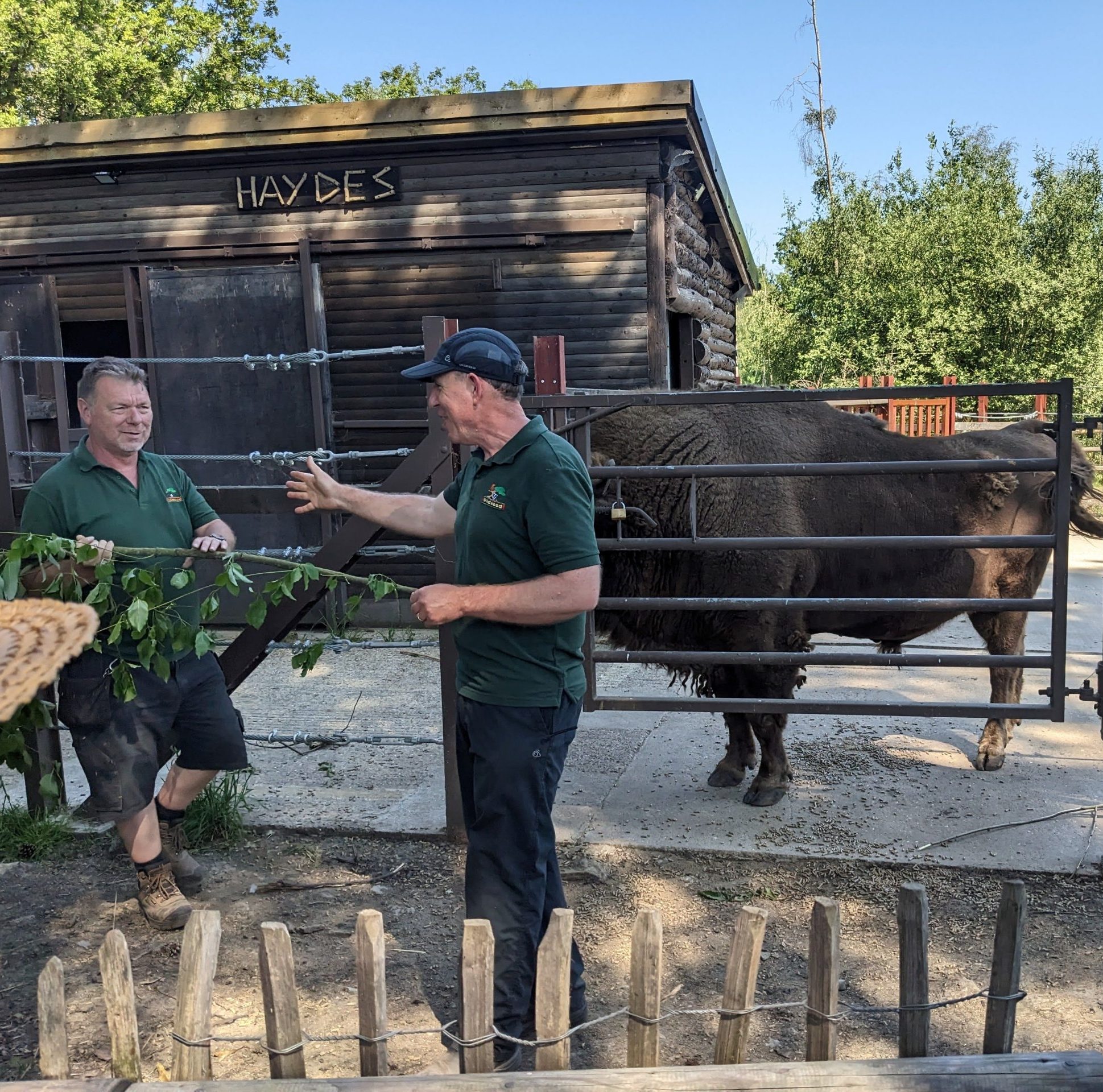
On one of the hottest days of the year to date, an enthusiastic group of 22 gathered at Wildwood Trust for a visit that – unusually for a visit by Kent Men of the Trees – did not focus on a specific tree collection. Our expectation on this visit was to understand more about the project to introduce European Bison in the Blean woodlands – which is a mixed woodland of sweet chestnut, broadleaf mixed woodland.
We were quickly to learn that Don, our guide for the entire visit, was bursting with enthusiasm and knowledge about the woodland, the bison and the progress of the project.
A joint project between Wildwood Trust and the West Blean Woodlands, managed by Kent Wildwood Trust, has prepared for and accepted 4 Bison, a mature female from Scotland, two young females from Ireland and a bull from Germany; this group was – unexpectedly – increased by the birth of a calf as well. An area of initially 55 hectares was set up – fenced – for the release of the bison, which took place after only 2 days in release pens.
The project expected the bison to act as “ecosystem engineers” by acting completely naturally and with the result that the densely wooded Blean would be opened up as the bison created tracks, trails and natural glades by barging through the trees, debarking by rubbing, or pushing them over to reach and eat the leaf canopy …and this became obvious even within a couple of months.
The new landscape allows different flora to emerge and flourish, the dead trees left after destruction by the bison create a wonderful habitat for invertebrates and fungi as does the copious bison dung deposited by the bison. When bison roll on the ground to dust their hide, the bare ground creates an excellent environment for lizards and sloe worms to prosper. The project monitors the biodiversity and has already noticed significant increases due to the environmental changes the bison have – naturally – engineered.
We began our visit in the penned-off area where the bison were held before release, and walked around the outside of the wild animal park. As each animal is monitored by a tracking collar, Don was able to demonstrate, on his phone, the movement of the group that day, and in fact that the bison group was at that time only about 100 metres from us, but invisible in the wooded thicket. After a short walk we re-entered the Wildwood Trust park, where Don introduced us to Haydes, a bull bison weighing in at more than 880kg of muscle and bone and standing an impressive 1.5 metres tall at the shoulder. Don talked about the gene pool of the once-nearly-extinct European Bison, which has grown to more than 10,000 across many countries, but care is still taken to ensure that interbreeding within a bloodline is avoided. Haydes was brought up in captivity and may be a useful stud, but is not suitable for re-wilding, as he has always been dependent on being fed, which is what we were invited, in a modest way, to take part in. Two members of our group happily stepped forward to offer a leafy tree branch into Haydes’ pen, and both felt the power of the beast as he tugged at the leafy end of the snack.
Don guided us back to the exit after two hours of non-step explanation for, and answering questions from, our enthusiastic group; we all felt that we had learned a great deal about this more “natural” woodland management due to the reintroduction of the mega-fauna, the bison!
On this occasion it was not possible to observe the results of the bison activities first hand, but this could be the purpose of a future visit.

